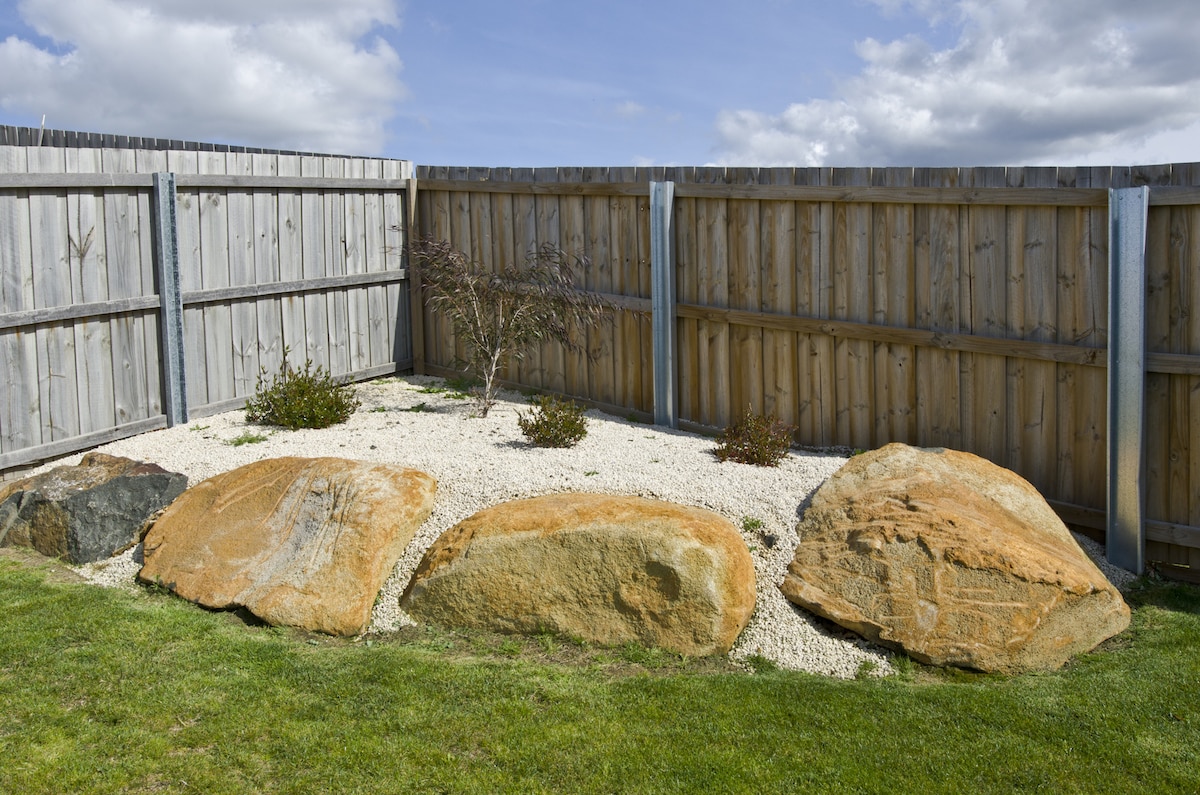Fence palings are one part of the most iconic fencing solutions of all – the picketed fence! This is a favourite option because it offers so much – style, affordability, durability and of course, they are very easy to install. In fact, you can even do it yourself and here’s how!
Step by Step Fence Paling Installation
- Step 1: You need to place the broader palings at the back of the fence. You’ll need an off-cut to create spacing between each paling. All you have to do is put the paling up against the spacer and affix it into the rail with nails at the bottom, top and middle of the paling. You line the first paling up with the edge of the post and continue nailing along the fence.
- Step 2: Once you have nailed in all the wider paling, you overlay these with the narrow planks. You need to place the smaller boards on the bottom at the plinth, with the paling centred between the wider boards. Use a spirit level to make sure each paling is straight before affixing.
Before Installing the Palings
Does it seem like we’ve forgotten something? That’s because we have. Here’s how to build the rest of the fence!
- Step 1: Make sure you know exactly where your boundaries are. Don’t just rely on the title boundaries, contact your local council and make sure you’re only taking what is rightfully yours.
- Step 2: Mark the line of the fence using stakes and string. Make sure you use stakes where the posts will be placed. The posts need to be placed at equal distances.
- Step 3: Set the corner posts first to make sure everything is straight. Dig holes 600mm deep and 300mm square, using an auger-type hole digger.
- Step 4: Place a timber sole plate in the bottom of each hole before setting the posts. Brace the posts to keep them straight until they have been fixed.
- Step 5: Use a 50/50 mix of dry cement and soil to fix each post. Use a spirit level to make sure each post is squarely in place. Once everything is straight, tamp down on the mixture and add water to cement the soil. Make sure the mixture is slightly sloped so rainwater can run away from the posts. Complete each other post in the same fashion.
- Step 6: Now you need to create notches to sit the cross rails in. Ensure the top rail is a minimum of 75mm from the top of the final height, the bottom 175mm from the plinth and the middle in between.
- Step 7: If you want to add a cap to the completed fence, make the top rail flush with the top of the post.
- Step 8: Use a saw to notch the posts, making sure they are only to the depth of the rails. The fit needs to be flush.
- Step 9: Use 75mm by 3.75mm galvanised bullet head nails to affix each rail. Make sure any joins are butted together in the middle of a post and stagger all rail joints.
- Step 10: Use a string line to make sure the plinth is straight, and then nail it on.
Finishing Off Your Masterpiece
You need to treat your fence to make sure it stands up against all forms of weather. Choose a high-quality treatment, and mask off any areas you don’t want to treat. The best way to mask off areas is to use old newspaper – you can even lay some on the ground to protect below.
If you’re going to paint your fence, make sure you choose an option that suits your design. You either want to choose a colour that matches your house or contrasts with it. For example, if you have a white fence, you can go white or even dark blue.
When choosing colours, think about maintenance. Dark blues hide dirt and dust really well, while white and blacks will show dust and marks a lot more. You can even choose a stain to retain the beautiful wooden look. A stain doesn’t just deepen the natural colour and variations, it also provides essential protection.
If installing fence palings still sounds a bit too hard, get in touch with the fencing experts at Everlast Services.
